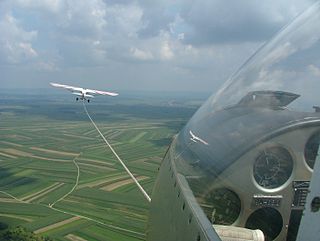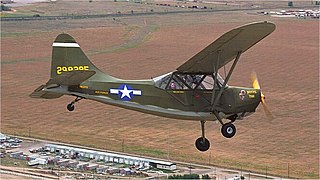
An aircraft carrier is a warship that serves as a seagoing airbase, equipped with a full-length flight deck and facilities for carrying, arming, deploying, and recovering aircraft. Typically, it is the capital ship of a fleet, as it allows a naval force to project air power worldwide without depending on local bases for staging aircraft operations. Carriers have evolved since their inception in the early twentieth century from wooden vessels used to deploy balloons to nuclear-powered warships that carry numerous fighters, strike aircraft, helicopters, and other types of aircraft. While heavier aircraft such as fixed-wing gunships and bombers have been launched from aircraft carriers, these aircraft have not landed on a carrier. By its diplomatic and tactical power, its mobility, its autonomy and the variety of its means, the aircraft carrier is often the centerpiece of modern combat fleets. Tactically or even strategically, it replaced the battleship in the role of flagship of a fleet. One of its great advantages is that, by sailing in international waters, it does not interfere with any territorial sovereignty and thus obviates the need for overflight authorizations from third-party countries, reduces the times and transit distances of aircraft and therefore significantly increases the time of availability on the combat zone.

An electromagnetic catapult, also called EMALS after the specific US system, is a type of aircraft launching system. Currently, only the United States and China have successfully developed it, and it is installed on the Gerald R. Ford-class aircraft carriers and the Chinese aircraft carrier Fujian. The system launches carrier-based aircraft by means of a catapult employing a linear induction motor rather than the conventional steam piston.

A seaplane tender is a boat or ship that supports the operation of seaplanes. Some of these vessels, known as seaplane carriers, could not only carry seaplanes but also provided all the facilities needed for their operation; these ships are regarded by some as the first aircraft carriers and appeared just before the First World War.

USS Philippine Sea was one of 24 Essex-class aircraft carriers of the United States Navy, and the first ship to be named for the Battle of the Philippine Sea. She was launched on 5 September 1945, after the end of World War II, and sponsored by the wife of the Governor of Kentucky.

CAM ships were World War II-era British merchant ships used in convoys as an emergency stop-gap until sufficient escort carriers became available. CAM ship is an acronym for catapult aircraft merchant ship.

In aviation, assisted takeoff is any system for helping aircraft to get into the air. The reason it might be needed is due to the aircraft's weight exceeding the normal maximum takeoff weight, insufficient power, insufficient available runway length, or a combination of all three factors. Assisted takeoff is also required for gliders, which do not have an engine and are unable to take off by themselves.

The flight deck of an aircraft carrier is the surface from which its aircraft take off and land, essentially a miniature airfield at sea. On smaller naval ships which do not have aviation as a primary mission, the landing area for helicopters and other VTOL aircraft is also referred to as the flight deck. The official U.S. Navy term for these vessels is "air-capable ships".

STOBAR is a system used for the launch and recovery of aircraft from the deck of an aircraft carrier, combining elements of "short take-off and vertical landing" (STOVL) with "catapult-assisted take-off but arrested recovery" (CATOBAR).

Naval aviation is the application of military air power by navies, whether from warships that embark aircraft, or land bases.

An aircraft catapult is a device used to allow aircraft to take off in a limited distance, typically from the deck of a vessel. They can also be installed on land-based runways, although this is rarely done. They are usually used on aircraft carriers as a form of assisted take off.

A tailhook, arresting hook, or arrester hook is a device attached to the empennage (rear) of some military fixed-wing aircraft. The hook is used to achieve rapid deceleration during routine landings aboard aircraft carrier flight decks at sea, or during emergency landings or aborted takeoffs at properly equipped airports.

The Electromagnetic Aircraft Launch System (EMALS) is a type of electromagnetic aircraft launching system developed by General Atomics for the United States Navy. The system launches carrier-based aircraft by means of a catapult employing a linear induction motor rather than the conventional steam piston. EMALS was first installed on the lead ship of the Gerald R. Ford-class aircraft carrier, USS Gerald R. Ford.

The Northrop Grumman X-47B is a demonstration unmanned combat aerial vehicle (UCAV) designed for aircraft carrier-based operations. Developed by the American defense technology company Northrop Grumman, the X-47 project began as part of DARPA's J-UCAS program, and subsequently became part of the United States Navy's Unmanned Combat Air System Demonstration (UCAS-D) program. The X-47B is a tailless jet-powered blended-wing-body aircraft capable of semi-autonomous operation and aerial refueling.

The Stinson L-5 Sentinel is a World War II-era liaison aircraft used by the United States Army Air Forces (USAAF), U.S. Army Ground Forces, U.S. Marine Corps and the British Royal Air Force. It was produced by the Stinson Division of the Vultee Aircraft Company. Along with the Stinson L-1 Vigilant, the L-5 was the only other USAAF liaison aircraft that was exclusively built for military use and had no civilian counterpart.

An optical landing system (OLS) is used to give glidepath information to pilots in the terminal phase of landing on an aircraft carrier.
Aircraft can have different ways to take off and land. Conventional airplanes accelerate along the ground until sufficient lift is generated for takeoff, and reverse the process to land. Some airplanes can take off at low speed, this being a short takeoff. Some aircraft such as helicopters and Harrier jump jets can take off and land vertically. Rockets also usually take off vertically, but some designs can land horizontally.

Shipborne rolling vertical landing (SRVL) is a method used to land a V/STOL aircraft that uses both the vertical thrust from the jet engine and lift from the wings.

In aviation, a ski-jump is an upward-curved ramp that allows aircraft to take off from a runway that is shorter than the aircraft's required takeoff roll. By forcing the aircraft upwards, lift-off can be achieved at a lower airspeed than that required for sustained flight, while allowing the aircraft to accelerate to such speed in the air rather than on the runway. Ski-jumps are commonly used to launch airplanes from aircraft carriers that lack catapults.

Observation seaplanes are military aircraft with flotation devices allowing them to land on and take off from water. Their primary purpose was to observe and report enemy movements or to spot the fall of shot from naval artillery, but some were armed with machineguns or bombs. Their military usefulness extended from World War I through World War II. They were typically single-engine machines with catapult-launch capability and a crew of one, two or three. Most were designed to be carried aboard warships, but they also operated from seashore harbors.

















